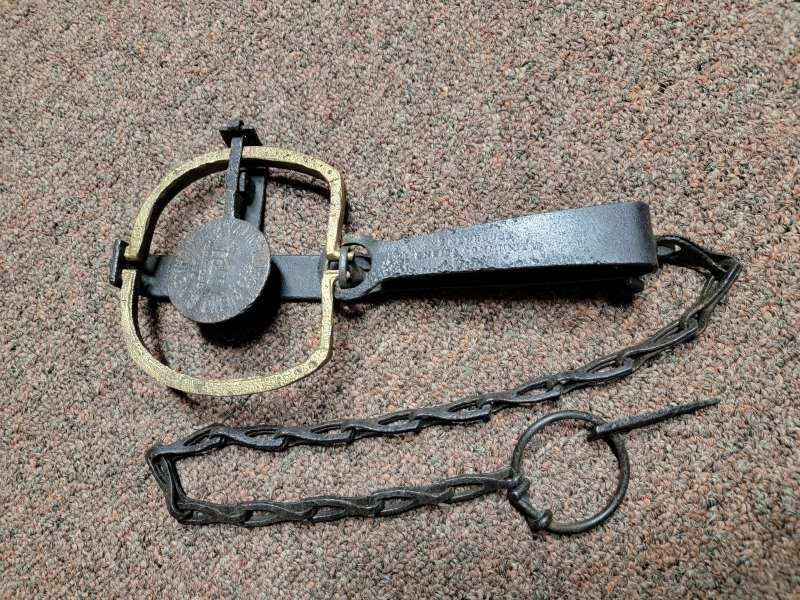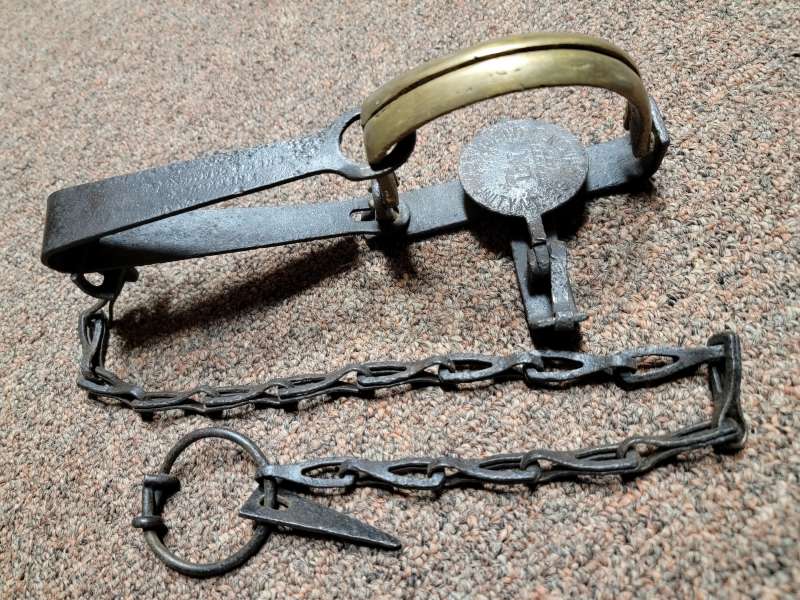Brass was used to make jaw patterns for sand casting molds and for pattern proofs which tested their fit/operation after casting:
Pattern--a blueprint of the desired part or preliminary model was taken to pattern makers who built a master pattern from wood or metals. The use of metals in forming patterns (mostly brass) increased considerably after 1910. Metal patterns, especially brass, were most suitable when large quantities of castings were required with little chance of needing alterations. Metal patterns hold their shape better than wood, are not affected by moisture, and ensure a cleaner withdrawal from the sand mold.
Pattern proof--after the pattern mold was formed, it was often tested with brass first to ensure fit and proper movement on the trap...before an extensive pour with malleable iron.
I have several brass patterns and pattern proofs that came from OC Ltd and ATC with provenance. Some have been drilled, installed on trap, then removed. Some were poured, inspected, never installed. All were ID marked with tags.
Like Dean said, I have not found any documentation that OC or ATC ever made a trap with brass parts for mass production. However, I believe that there are some brass pattern proof jaws out there that survived the testing process and remain on original traps. Beware the new reproductions.



